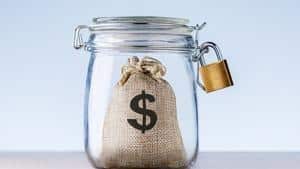To the Rescue: Why You Need an Emergency Fund Now
Recent reports emphasize the importance of having an emergency fund, especially as a significant portion of individuals lack savings to cover unforeseen expenses. Despite the current record highs in the stock market and a modest 4.2% unemployment rate, establishing an emergency savings fund is crucial, as suggested by consumer fintech banking platform Present.
The harsh reality unveils that a considerable number of Americans are ill-prepared to handle unexpected financial burdens. A startling survey by financial data website Bankrate reveals that 54% of Americans do not possess sufficient funds to cover three months’ worth of expenses, with 24% having no emergency savings at all.
In times of economic prosperity, the significance of an emergency fund might seem diminished. However, the future financial landscape is unpredictable. If faced with financial turmoil, the consequences of not having a safety net can be severe and immediate. According to Christine Benz, a personal finance expert at Morningstar, maintaining an emergency fund provides invaluable peace of mind, safeguarding your financial strategy from unforeseen expenses without resorting to tapping into long-term investments or relying on high-interest credit cards for short-term cash needs.
The Imperative of Planning Ahead
Looking ahead, economic indicators suggest potential stormy weather. A contraction of 0.5% in the U.S. economy’s annual rate in the first quarter of 2025, partly due to a highly uncertain tariff environment, coupled with plummeting employee and CEO confidence levels, signifies looming financial challenges.
In light of these uncertainties, the necessity of proactively preparing for financial emergencies becomes paramount. Establishing an emergency fund is a gradual process that demands strategic planning on initiation, accumulation targets, and storage considerations.
Key Steps to Building Your Emergency Fund
- Commence Without Delay: Initiate the process immediately by setting up automated savings deductions. Regular contributions, even as modest as $50 per pay period, can accumulate over time, laying a foundation for financial resilience.
- Set Ambitious Targets: Aim to amass between 3-6 months’ worth of expenses to shield yourself from unexpected income disruptions. High earners or individuals with dependents should strive for a year’s worth of expenses, providing additional financial security.
- Optimize Returns: Maximize the growth potential of your emergency fund by exploring high-yield savings accounts offering competitive interest rates, steering clear of low-yield options that hinder wealth accumulation.
Enhancing Financial Well-being and Security
The rewards of diligently building an emergency fund are substantial. Reports indicate that individuals setting aside a minimum of $2,000 experience a 21% enhancement in financial well-being, with those achieving 3-6 months’ worth of expenses benefitting even more.
Moreover, the federal SECURE 2.0 Act permits penalty-free withdrawals from retirement accounts in emergency situations, providing additional flexibility for unforeseen financial needs.
Regardless of where you choose to house your emergency savings, the fundamental role it plays in fortifying your financial defenses, preserving your monetary plans, and ensuring peace of mind amidst economic uncertainties cannot be understated.
This insightful article was brought to you by Present and reviewed by Stacker for distribution. Originally featured on current.com, a part of the BLOX Digital Content Exchange.
Stay informed with the latest local business news delivered directly to your inbox weekly.


